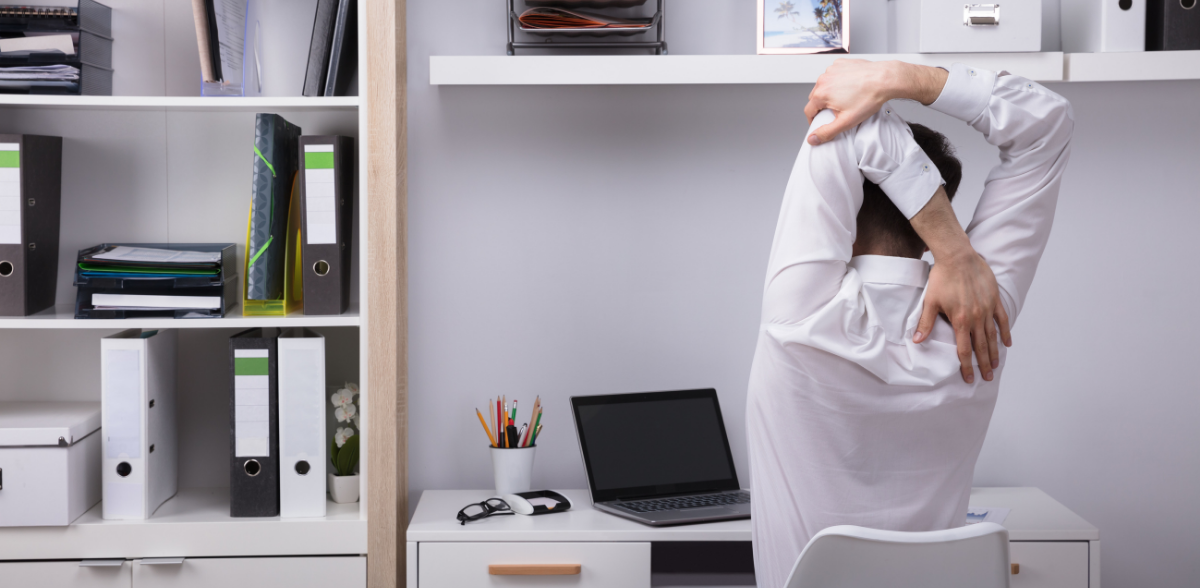
Lockdown because of COVID has meant an enforced rest from all sorts of activities for a lot of us. Some had to stop going to the gym. Or stop walking as much. Some stopped sitting in traffic jams or having long train commutes to work.
A lot of the patients we’re seeing in clinic at the moment thought that rest from a particular activity would help their pain. They had always put it down to that activity, and so when they stopped, they thought the pain would go away. The problem is, that rest isn’t always best.
Resting is the obvious thing to do
Most people who get an injury would expect to rest it, and the pain will likely go away. This can be true a lot of the time for something that starts hurting for a particular reason. Like twisting your ankle or pulling a muscle. But there are problems with just resting.
Firstly, if you do have a specific injury, then the pain might reduce with rest. However, often what will happen is that it will come back when that person starts to do more.
For those who have had pain for a period of time but they’re not completely sure why, resting, such as the enforced rest lockdown brought, will rarely solve the problem.
Why rest isn’t always best
Let’s explain why rest isn’t always best using the two examples above. A new injury such as a sprained ankle and a chronic back problem that’s been there for months for no obvious reason. One the person put down to lifting things at the gym which they then stopped during lockdown.
New problems
First the twisted ankle. For the first couple of days after a sprained ankle, rest is the right thing to do. You want to get rid of the swelling as quickly as possible and so you need to take the pressure off. However, if you keep resting, the ankle gets stiff. The swelling stays for longer than necessary. The muscles around the ankle get weak. And the ligament you likely damaged fails to repair as well as it should do.
This is why we often see people who have simply twisted their ankle and expected it to get better with rest. But when they try and do more again, the ankle still doesn’t feel right, even months later. With most obvious injuries ie you remember what started the pain. An initial period of rest is beneficial, but then you have to start doing the right things again to get the injury to heal as quickly and effectively as possible. Which is why Physio can be useful as we often guide people through this process.
Chronic problems
Now let’s look at the chronic back problem that doesn’t go away with rest. The problem with this is that whilst the lifting of the weights in the gym might not be helping, a complete rest probably won’t help either. Rest to a lot of people means not doing much. But we are designed to move. So if you have a back problem for months, and then you do less movement, it might improve, but more likely it will stiffen. The other issue with rest is that muscles get lazy. If they don’t need to work. If they aren’t challenged. They will stop working and get less active and then weaker. Any area of the body that is stiff and has muscles that aren’t working well around them will likely hurt.
So in the instance of the chronic issue, just resting again doesn’t solve the problem. Rest from an activity that is aggravating a problem can definitely help, but it needs to be coupled with the right exercises to get that area moving and the muscles working so that it’s more likely to tolerate that activity again in future.
Brief Rest with the right activity included is often the best
Rest by itself then is often not the best. But relative and brief rest from an activity that aggravates a problem, coupled with the right activity to mobilise and strengthen an area can often help. The key is knowing when to rest. What from and for how long. Getting the right amount of rest, to take the irritation away from a particular area, to let it settle. That buys you a window of time to get more mobile and strong and that’s the key to solving most pain.
Getting all that right can be difficult, which is why we see so many people that need help with knowing how much to do and what to rest from. Physios are great at understanding what the problem is, and modifying activity to help their patients reduce pain now, but also get stronger and more tolerant to load. This means they can usually safely return to their favourite (or most necessary activities) without pain.
How to know whether you should rest or not
For a new injury or new pain whether you can identify the cause of it or not, usually a couple of days of rest is a good idea. If the pain settles, then slowly return to all your normal activities. If it doesn’t, then try to start moving a little more each day and see if that helps. But If it still doesn’t settle, or if the problem is stopping you doing a lot of things, that would be a good time to see someone to help.


